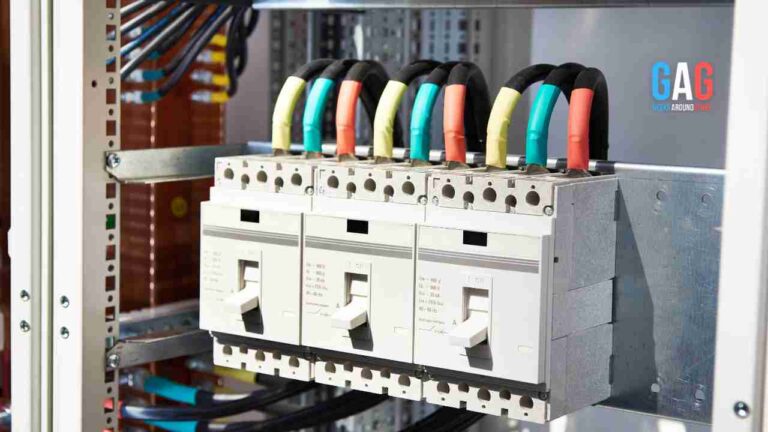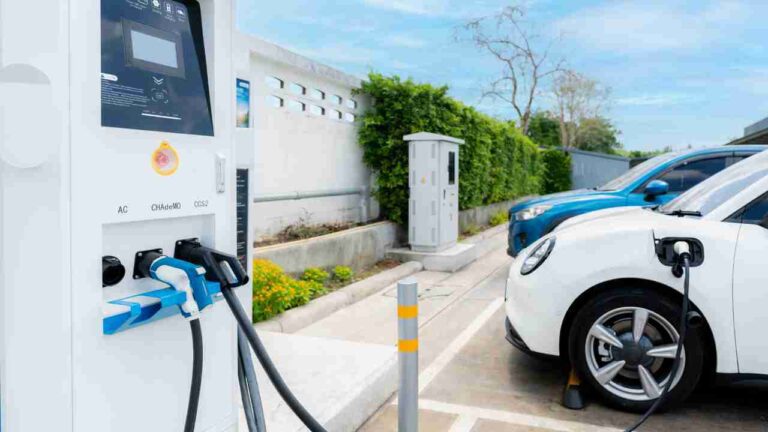- 1. Identifying Locations for EV Charging Stations
- 2. Choosing the Right Type of Charging Station
- 3. Installation and Maintenance of Charging Stations
- 4. Benefits of an Extensive EV Charging Network
- 5. Frequently Asked Questions
- 5.1. How much does it cost to use an EV charging station?
- 5.2. How long does it take to fully charge an electric vehicle?
- 5.3. Can electric vehicles be charged using a standard household outlet?
- 5.4. Are there any safety precautions that need to be taken when using an EV charging station?
- 5.5. What is the average lifespan of an EV charging station?
- 6. Conclusion
The increasing popularity of electric vehicles (EVs) has brought about the need for an extensive EV charging network. Building such a network involves identifying locations, choosing the right type of charging station, and ensuring proper installation and maintenance. An extensive EV charging network brings numerous benefits, including reduced range anxiety among EV drivers, increased adoption of EVs, and reduced greenhouse gas emissions.
Identifying suitable locations for EV charging stations is crucial in building an extensive network. Factors to consider include proximity to major highways or thoroughfares, availability of parking space, local regulations on land use, and accessibility for disabled individuals. Additionally, understanding the demographics of potential users can help determine areas with high demand for charging stations. Once potential locations are identified, selecting the appropriate type of charging station is necessary to meet the needs of different types of EVs and their owners. This article will delve into these topics in detail to provide a comprehensive guide on building an extensive EV charging network.
Identifying Locations for EV Charging Stations
The identification of optimal locations for EV charging stations is a crucial step in the development of an extensive and effective charging network. To achieve this, there are several factors to consider, such as population density, transportation corridors, and proximity to amenities. Integration with smart grids is also important so that energy demand can be balanced and optimized across the entire electrical grid.
Another essential consideration is financial incentives for businesses that would host EV charging stations. Providing these incentives could encourage more companies to participate in building out the charging infrastructure. By doing so, businesses can attract customers who drive electric vehicles while also contributing to a cleaner environment. Additionally, governments can offer tax credits or rebates for installing EV chargers on their property or leasing space for them. Overall, identifying strategic locations for EV charging stations requires careful planning and collaboration among stakeholders in the public and private sectors alike.
Choosing the Right Type of Charging Station
Selecting the appropriate type of station is crucial when establishing a charging infrastructure for electric vehicles. Charging speeds and compatibility with different EV models should be considered when choosing the right type of charging station. There are generally three levels of EV charging: Level 1, Level 2, and DC fast charging.
Level 1 charging uses a standard household outlet and provides about 3-5 miles of range per hour of charge. This level is suitable for overnight charging at home or work but is not practical for public chargers as it takes too long to charge an electric vehicle fully. Level 2 charging, on the other hand, typically uses a dedicated circuit and provides between 10-60 miles of range per hour depending on the station’s power capacity. This level is more suitable for public chargers as it can provide enough charge to get drivers back on the road quickly. DC fast charging, which uses direct current instead of alternating current like Levels 1 and 2, can provide up to 80% capacity in about 30 minutes but requires specialized equipment that is expensive to install and maintain. When selecting a charger type, it is essential to consider both speed and compatibility with different EV models to ensure that all drivers’ needs are met efficiently and effectively.
In conclusion, choosing the right type of EV charger plays a critical role in building an extensive network that meets consumers’ needs while promoting sustainable transportation. It requires careful consideration based on factors such as charging speeds and compatibility with different EV models. By providing various options from Level 1 to DC fast-charging stations in convenient locations accessible by most people, we will help promote electric vehicle adoption while reducing carbon emissions associated with transportation globally.
Installation and Maintenance of Charging Stations
Installation and maintenance are critical components of establishing a reliable infrastructure for electric vehicle charging stations. The installation process involves site selection, electrical grid connection, and equipment setup. Cost considerations play an important role in determining the type of charging station to install. Home chargers, Level 2 chargers, and DC fast chargers all vary in price with DC fast chargers being the most expensive due to their advanced technology and capability to charge vehicles quickly. In addition to the cost of purchasing equipment, installation costs may vary depending on factors such as location, permitting requirements, and labor costs.
Government regulations also play a key role in the installation process by outlining safety standards and technical specifications that must be met by charging station manufacturers. These regulations ensure that charging stations are compatible with electric vehicles and that they meet certain safety standards during operation. Maintenance is equally important as it ensures that charging stations remain operational over time. Regular maintenance checks include cleaning of charging ports, checking electrical connections for damage or wear, replacing faulty parts if necessary, and software updates for system optimization. Overall, proper installation and maintenance of EV charging stations are crucial for increasing accessibility to EVs while promoting sustainability efforts towards a cleaner environment.
Benefits of an Extensive EV Charging Network
Establishing a comprehensive infrastructure for electric vehicle charging stations can significantly reduce range anxiety and promote wider adoption of sustainable transportation. With the help of an extensive EV charging network, electric vehicle owners can have access to reliable and convenient charging options, which ultimately increases their confidence in driving longer distances without worrying about running out of power. Moreover, this infrastructure can also encourage more people to switch to electric vehicles by addressing one of the biggest concerns associated with them – limited range.
In addition to mitigating range anxiety, an extensive EV charging network also offers several other benefits that contribute towards increased electric vehicle adoption. For example, governments around the world are incentivizing the installation of public charging stations as part of their efforts to reduce greenhouse gas emissions and improve air quality. This has led to a surge in private investments in EV charging infrastructure as well, creating new business opportunities and employment opportunities while supporting sustainable mobility solutions. Furthermore, widespread availability of EV charging stations could also lead to reduced energy costs over time by enabling utilities to better manage peak demand periods through smart grid technologies.
Frequently Asked Questions
How much does it cost to use an EV charging station?
EV charging station pricing varies among different charging networks. Cost comparisons show that prices range from free to per-minute or per-kWh charges. The cost depends on factors such as location, ownership, and the level of service provided.
How long does it take to fully charge an electric vehicle?
The EV charging speed varies depending on the battery size, charger capacity and type. On average, it takes about 4-8 hours to fully charge an electric vehicle at home. Charging times can be compared between different charging stations using standardized measurements such as kW output or miles of range added per hour.
Can electric vehicles be charged using a standard household outlet?
The compatibility of electric vehicle (EV) charging with standard household outlets is a topic of interest in the EV industry. Residential solutions are available, but may not charge as quickly or efficiently as dedicated EV charging stations. EV Charging: Outlet Compatibility, Residential Solutions.
Are there any safety precautions that need to be taken when using an EV charging station?
Safety measures and emergency protocols are essential when using electric vehicle charging stations. These include proper installation, regular maintenance, and adherence to manufacturer guidelines. Users should also avoid overloading the station or leaving their vehicles unattended while charging.
What is the average lifespan of an EV charging station?
The average lifespan of an EV charging station is influenced by various factors such as usage intensity, environmental conditions, and the level of maintenance provided. Appropriate EV charging infrastructure maintenance can prolong the lifespan of a station.
Conclusion
As we have seen, building an extensive EV charging network is no easy feat. It involves identifying suitable locations for the stations, choosing the right type of charging station, and ensuring proper installation and maintenance. However, the benefits of such a network are numerous – from reducing carbon emissions to increasing convenience for EV drivers.
But let us not forget about those who oppose this idea. Those who argue that electric vehicles are just a passing fad and that investing in an extensive charging network is a waste of resources. Oh yes, because clearly, preserving our planet for future generations is less important than clinging onto outdated beliefs.
In conclusion, building an extensive EV charging network may be challenging but it is vital if we wish to create a sustainable future. To those who refuse to see the importance of such initiatives – well, I suppose they can continue living in their fossil fuel-powered bubble while the rest of us move forward towards progress and innovation.







